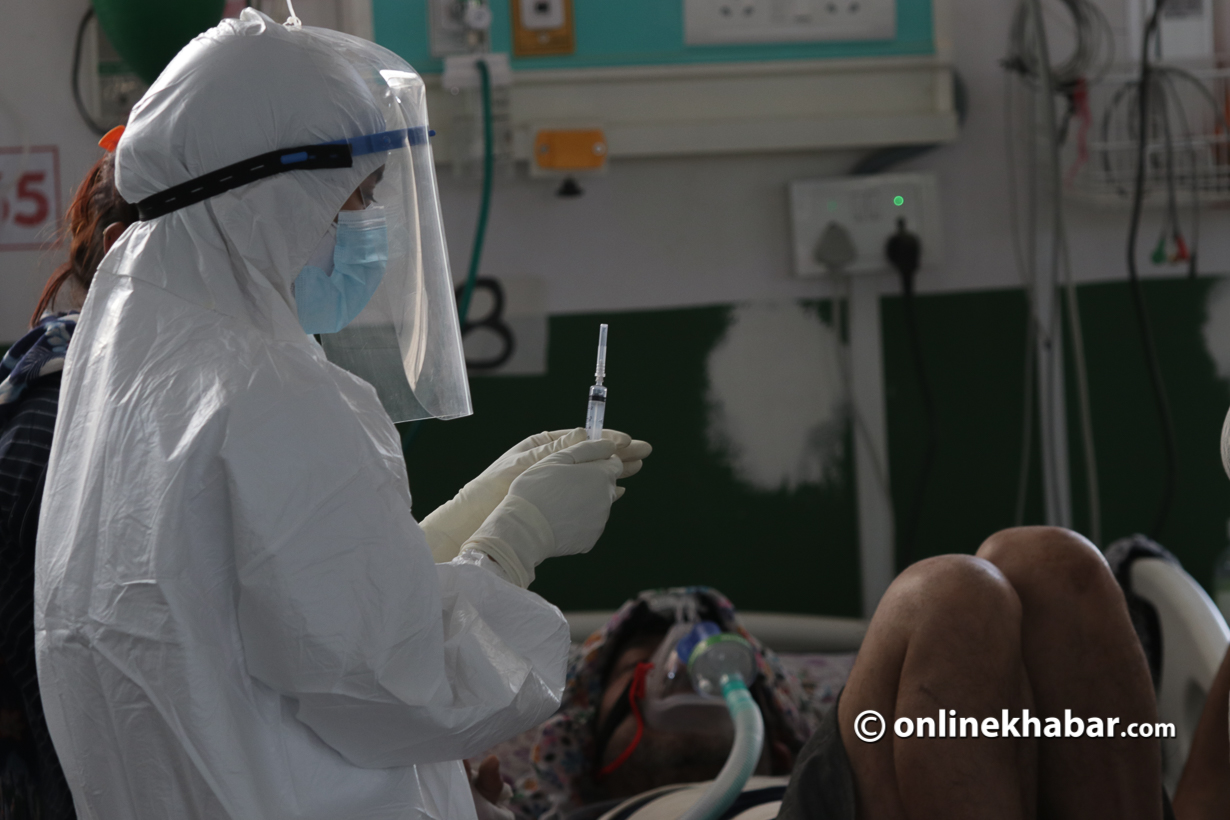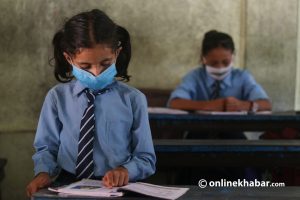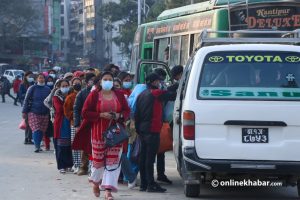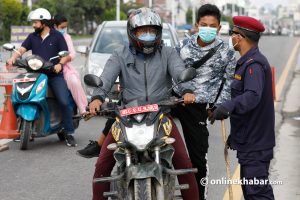Owing to the rising number of Covid-19 cases, the Ministry of Health and Population last week stated that at the current rate, the country’s health system would not be able to cope with the pandemic.
The statement that later drew a lot of criticism said that government hospitals would not be able to cater to the patients if cases continued to rise. Denizens of the country, after the statement was released, have been reminding how the Health Ministry cannot shy away from the responsibility especially at such a delicate time, even in the past, it has done little to nothing.
But, there was a lot that they could have done. There was a lot the nation could have learnt last year also and that could have come in useful today. The government, and the prime minister, kept taking the situation lightly which has resulted in them trying to shy away from all responsibilities.
The major mistake that the government did was not closing down the border or controlling the border movement as cases in India continued to rise. It relaxed all rules for people coming to Nepal from any country.
While a mandatory two-week quarantine was in place for most of last year, this year, those rules were put on hold as all one needed to enter Nepal was a negative PCR report conducted in the last 72 hours. People from India even made Nepal a transit to go to other countries.
The government has only now announced that flights to Nepal would be suspended for a time being.
Last year, a lot of emphases was given to contact tracing. The local ward offices called people who had been in close contact with Covid-19 patients. But this year, none of that is taking place. The ward offices have no idea what to do as contact tracing has categorically stopped.
To get this under control, the government needs to ensure that more tests are conducted. But, it is not happening as people are only testing when they show Covid-19 symptoms. The lack of testing has been a major concern as the virus is transmitting into entire communities.
That is not it. There are a lot of mistakes done by the government. Turning a blind eye to sirens, the government’s lack of proactiveness has led to such a problem.
Here is a list of four major mistakes done by the government when the country entered the second wave of the pandemic recently:
1. Lockdown without border closure
Locking down the districts with many Covid-19 patients was the right thing to do. But even though the government imposed prohibitory orders, it did so without stopping the flights. The border is open until today, which meant that people who might have had the virus continue to come into the country without having to quarantine. The government’s hesitation in closing the borders with India has caused a major problem.
2. Lack of dialogue with stakeholders
During last year’s lockdown, the government had held a lot of discussions with the Nepal Medical Association and other experts from the health sector. But this year, not enough discussions have been held.
To encourage the health sector, an allowance was also announced. This year, there has been nothing of the sort. Instead, the government is seen threatening doctors for speaking the truth. This is another reason the situation is getting out of hand.
3. No coordination with private hospitals
It is clear and understandable that the government alone cannot cater to all Covid-19 patients. But, the least it could have done is talk to private hospitals and seek help from them. But, as of today, there has been no talk with the private hospitals.
The coordination last year helped the government a lot as it was able to make rational decisions like how to move forward and what to do when the situation got out of hand. This year, nothing of this sort has happened. The government is yet to sit with the health sector to hold such discussions.
Consequently, all beds at government-run hospitals are full. Private medical colleges and hospitals could help the government for a brief period if the government asked. Otherwise, the situation will get worse.
4. Ineffective human resource mobilisation
There are little over 1,300 doctors at state-owned hospitals across the country. This number was set when Nepal’s population was 15 million. Now, the population has doubled while the number of doctors remains the same.
We have heard cases of hospitals suffering due to the lack of doctors. The number of government doctors should have been increased last year itself to at least 4,000 along with a similar amount of other health professionals like nurses and hospital staff.
People might question how the government can appoint doctors in such a short time. Well, they can hire them temporarily. After the pandemic is under control, then, it can call for competition and give permanent spots to doctors based on tests and performance evaluations. The government cannot use doctors at will in these dangerous times and let them go haphazardly.
These are dangerous times. The time to act has gone, but all is still not lost. We need to increase testing and add the number of health professionals if we want to control this pandemic.























